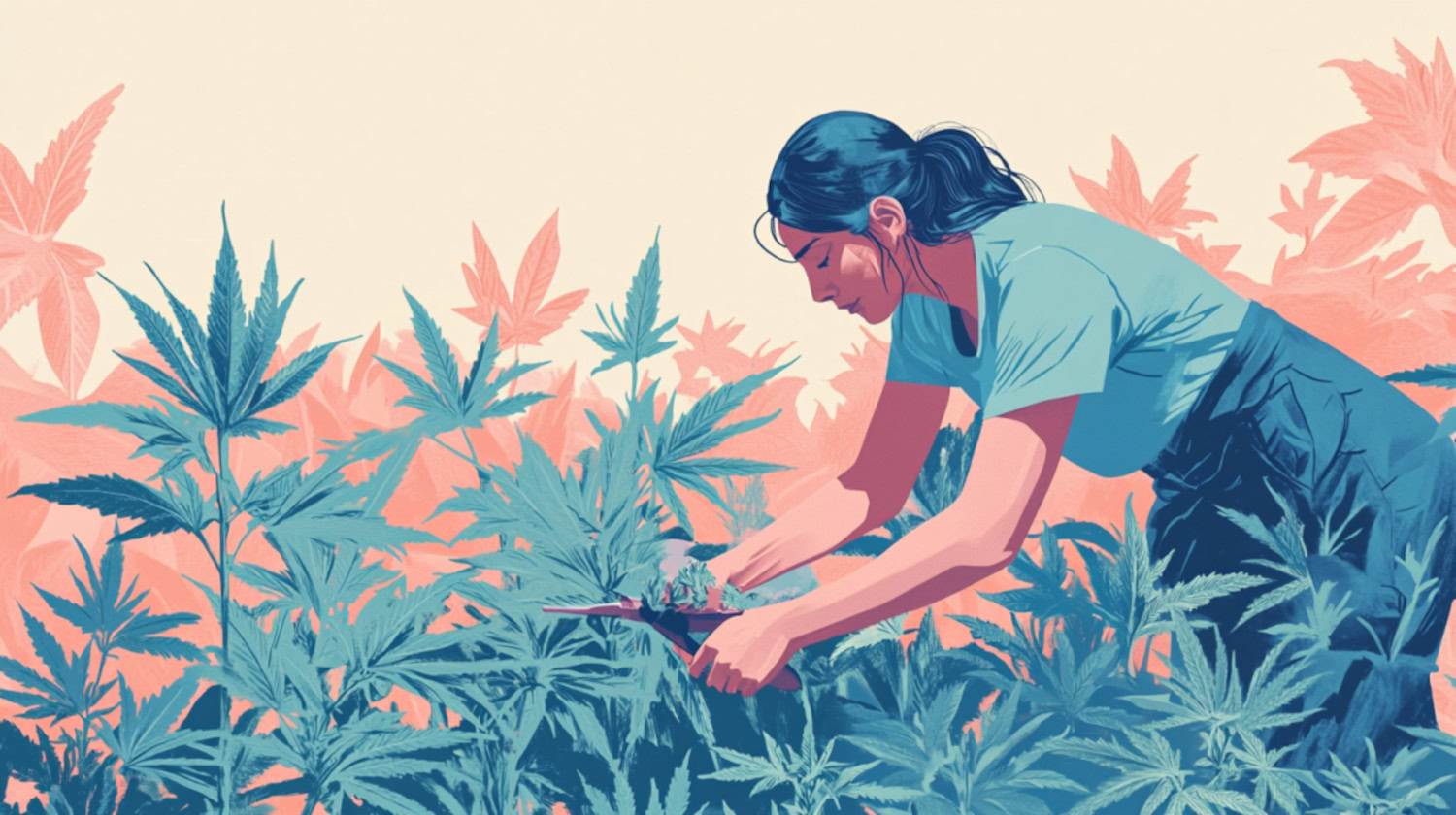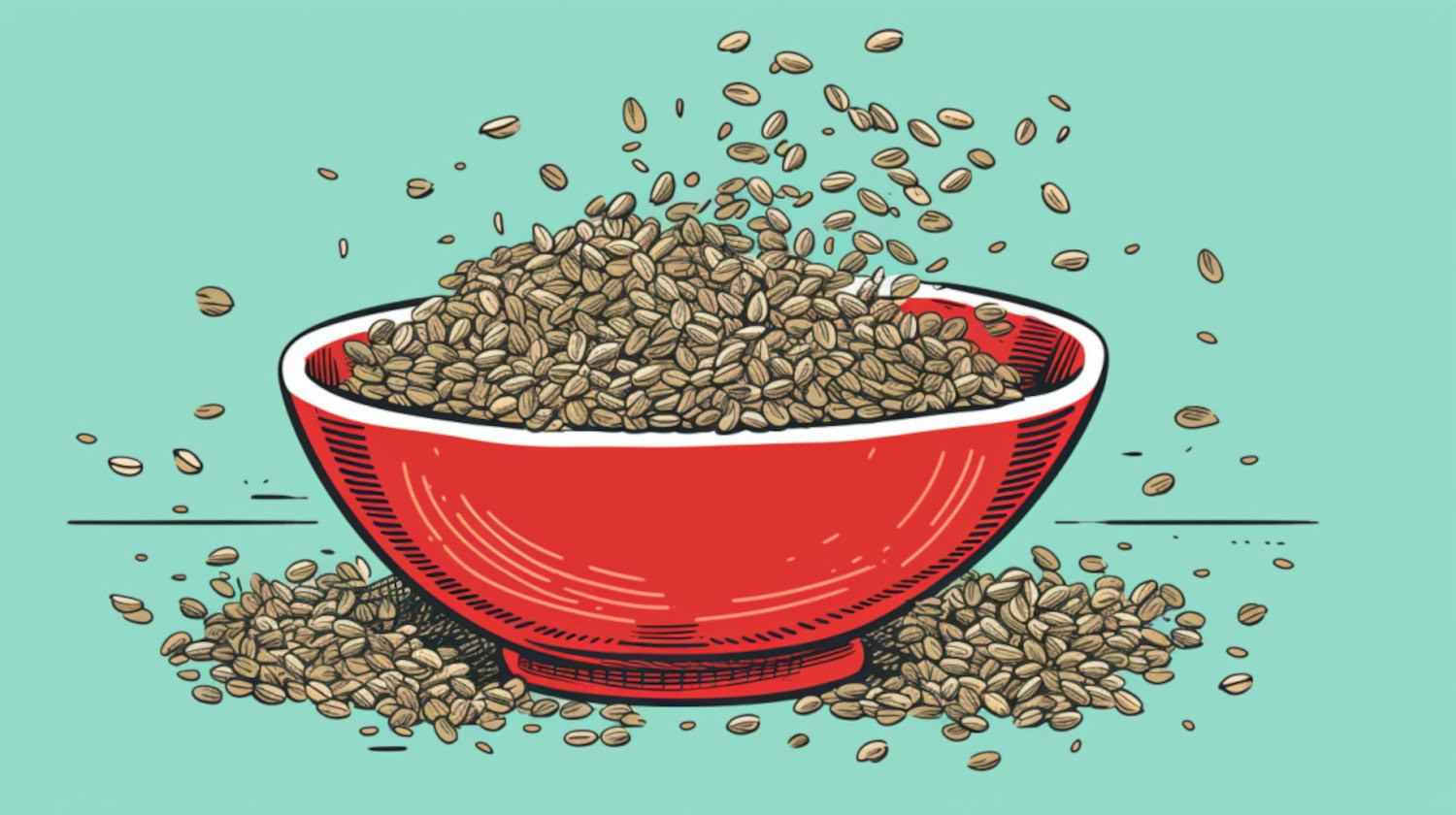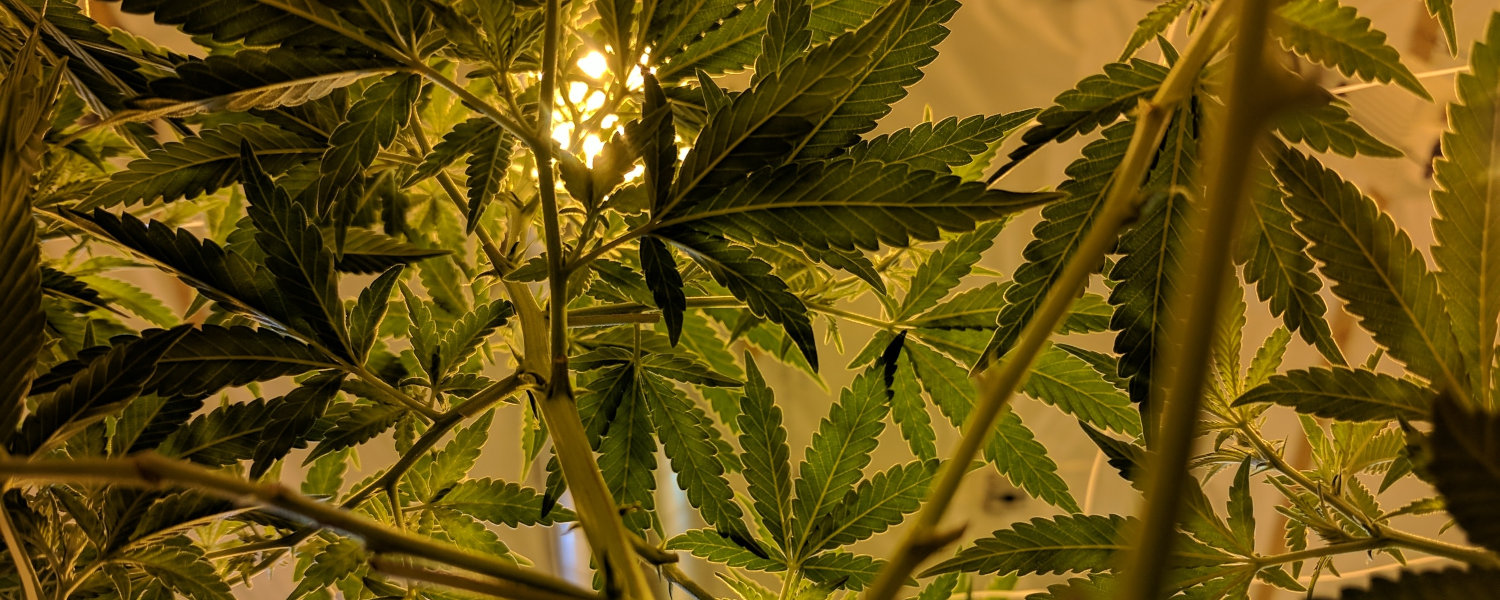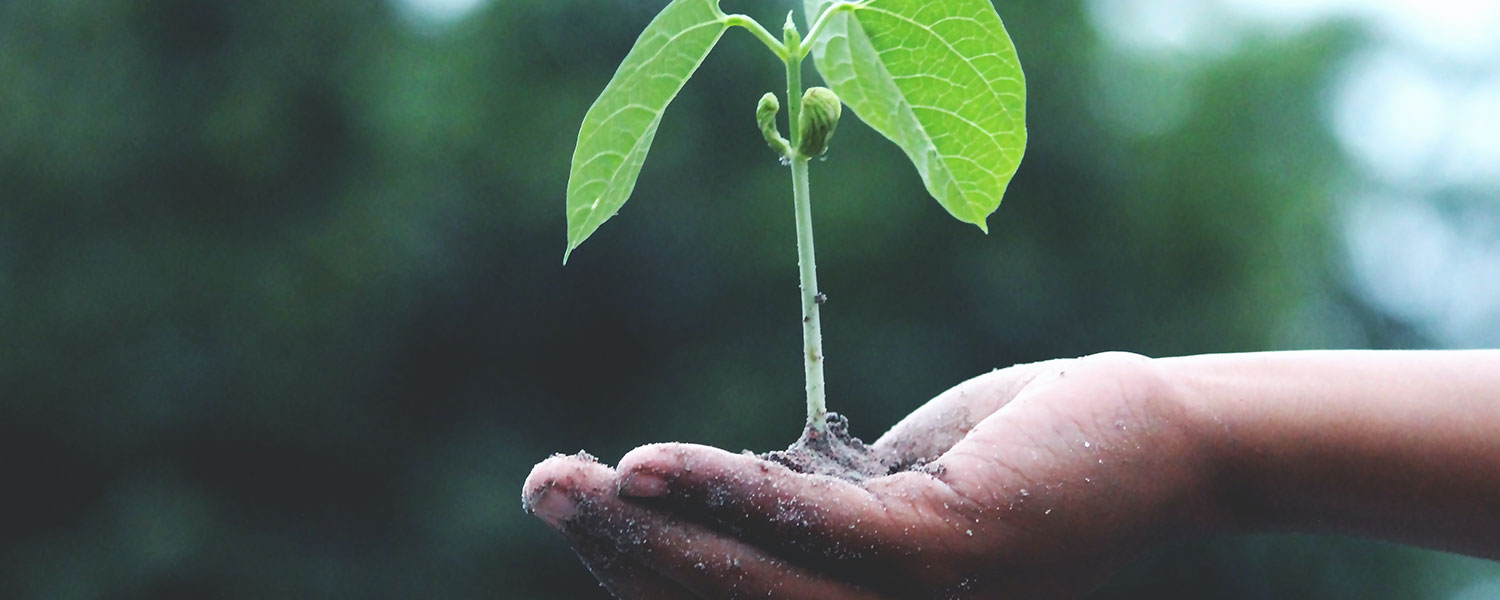In This Article
- Why Trim Cannabis?
- Key Benefits of Trimming
- When to Trim Cannabis: Wet vs. Dry
- Wet Trimming
- Dry Trimming
- Tools for Trimming Cannabis
- Step-by-Step: How to Trim Cannabis Buds
- Step 1: Cut the Plant and Branches
- Step 2: Remove Fan Leaves
- Step 3: Buck the Buds
- Step 4: Trim the Buds
- Hand vs. Machine Trimming
- Hand Trimming
- Machine Trimming: Pros and Cons
- FAQs: Cannabis Trimming Tips
- Does pruning cannabis increase yield?
- Broadly speaking, how do you trim cannabis with perfect precision?
- Is it better to wet trim or dry trim cannabis?
- Which is better: hand trimming vs. machine trimming?
- What happens after trimming?
- References
Key Takeaways
- Trimming cannabis improves bud appearance, aroma, and usability, resulting in a higher-quality final product.
- Wet trimming works best in humid climates, while dry trimming is ideal for preserving terpenes in arid environments.
- The right tools, techniques, and timing are essential to ensuring an efficient and effective trimming process.
Trimming cannabis is a time-intensive, rewarding part of the cannabis growing process. Before planting a seed in the ground, it’s best to consider the different trimming options. Which one you choose will depend on various factors, like the size of the grow.
Why Trim Cannabis?
For decades, trimming cannabis has been a vital step in the supply chain, both in unlicensed markets and licensed dispensaries. Regardless of the buying scenario, consumers expect clean, trichome-covered buds that justify their cost. Trimming directly shapes those expectations, influencing the immediate experience and future purchasing decisions.
When cannabis buds are first harvested, they are not the visually aesthetic buds found in the jar on dispensary shelves. They are covered in sugar leaves. These leaves must be trimmed to reduce the amount of moisture the buds will hold, reducing the chances of mold or mildew forming on the buds.
Trimming can be done wet, pre-drying, dry, or post-drying. It is traditionally done by hand, with special pruning shears, but modern advancements, including cannabis trimming machines, have expanded the conversation about proper techniques and the future of production.
Opinions may vary on methods, but the role of trimming as an essential step in the production process remains unquestioned. Buyers often gravitate toward well-trimmed cannabis as it often separates premium products from lower-quality offerings. It is a reflection of farmers and brands that prioritize high quality and presentation.
Key Benefits of Trimming
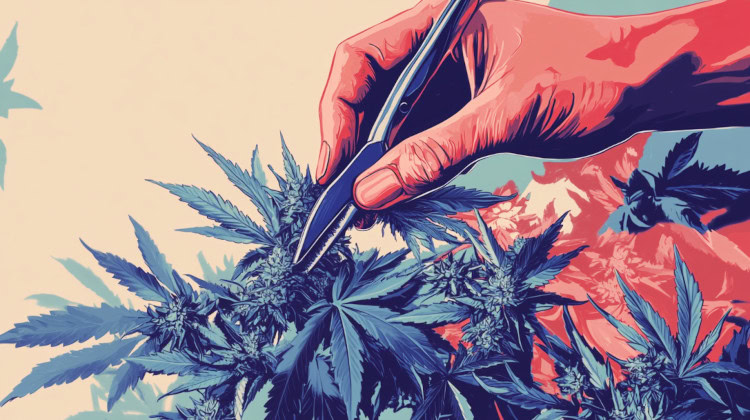
- Higher quality: Removing the sugar leaves reduces the amount of moisture the buds can retain, reducing their chances of developing mold or mildew.
- Aesthetic Appeal: Well-trimmed buds highlight the plant’s natural features, including vibrant colors and frosty trichomes.
- Improved Aroma: Untrimmed cannabis can retain unwanted elements, like chlorophyll. Retained chlorophyll can lead to grassy or hay-like aromas during drying.
- Better Smoke Quality: Trimming helps mitigate the risk of a bad experience by removing leaves and stems that burn unevenly and produce unpleasant flavors. By removing these unwanted elements, the bud will likely deliver a smoother, more enjoyable experience.
When to Trim Cannabis: Wet vs. Dry
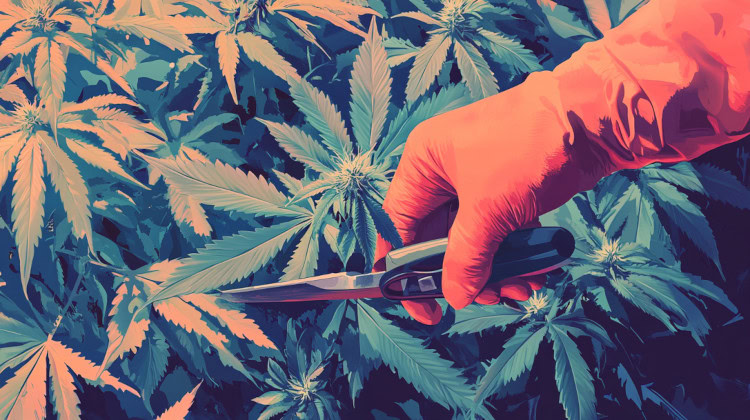
Growers can trim their cannabis either immediately after harvest (wet trimming) or after the drying process completes (dry trimming).
Each method has benefits and challenges, making the decision largely dependent on the grower/producer’s preferences and local environment.
Wet Trimming
Wet trimming requires the cutting and shaping of buds right after harvest. Ideal for growers in humid climates where fast drying is a key component to mold prevention, wet trimming can save space by drying just the buds, not the entire plant.
Pros of Wet Trimming:
- Easy: Typically, it is more straightforward to remove while keeping the fan and sugar leaves pliable.
- Quicker Process: A faster drying process helps reduce moisture content upfront.
- Plant Potential: Maximizes aroma and cannabinoid preservation in some cases.1
Wet Trimming Challenges:
- Increased Stickiness: Fresh, wet buds are resinous and sticky, making the process messier and requiring more frequent cleaning.
- Time-consuming: Wet trimming requires immediate attention after harvest, which can be a time crunch for growers with large harvests and/or limited staff.
- Potential for Damage: Wet buds increase the risk of trichome breaks, reducing their overall quality.
- Drying Setup: Improper drying can lead to mold or uneven drying.
Dry Trimming
Dry trimming begins after the plant is hung to dry. This slower process is typically suited for arid climates and is known for preserving terpenes and cannabinoids.
Pros of Dry Trimming:
- Less Mess: Far less sticky and messy than wet trimming.
- Easier to Handle: Brittle sugar leaves allow for precise shaping.
- Enhanced Experience: Dry trimming can enhance terpene content due to slower drying.1
Dry Trimming Challenges:
- Difficult Leaf Removal: Once dried, fan and sugar leaves become brittle, making for a harder clean removal process, often requiring more precise handling or risk of bud damage.
- Longer Process: Dry trimming extends timelines from harvest to finished product.
- Risk of Terpene Loss: Extended drying periods can produce increased terpene degradation if the drying environment isn’t controlled properly.
- More Space: Hanging entire plants or large branches to dry requires significantly more space compared to wet trimming.
Tools for Trimming Cannabis
Here are some must-have tools for a high-quality trim:
- Cannabis Trimming Scissors: These scissors are precisely designed for sticky, resinous buds.
- Trim Tray: A specialized tray that collects kief while trimming.
- Gloves: Prevents sticky residue buildup on the hands while maintaining hygiene.
- Drying Racks: For post-trim storage and drying.
- Dehumidifier: For humidity regulation while drying.
Step-by-Step: How to Trim Cannabis Buds
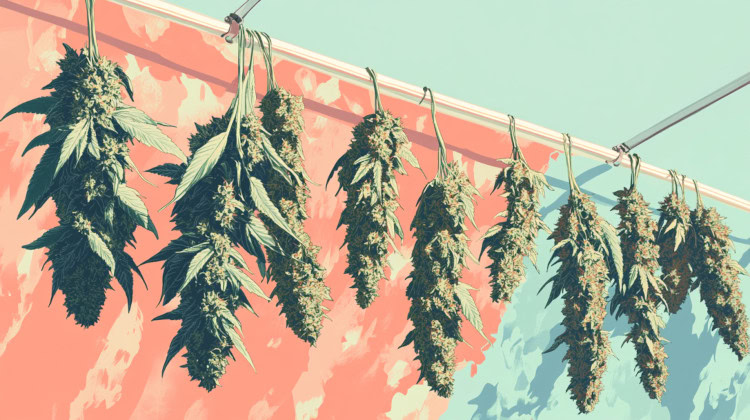
Whether trimming wet or dry, the process remains the same:
Step 1: Cut the Plant and Branches
Using pruning shears, separate the plant into smaller, easier-to-manage branches. If dry trimming, hang the branches for three to seven days or until the stems snap rather than bend. Wet trimming skips this drying phase and can begin at Step 2.
Step 2: Remove Fan Leaves
Fan leaves are the large cannabis leaves present on the entire plant. These instantly recognizable leaves serve the plant during its vegetative phase, but they’ve now served their purpose. At this stage, the fan leaves are removed, either by gently pulling them off (wet trimming) or clipping them with scissors (dry trimming).
Step 3: Buck the Buds
Next, cut the individual buds off the branches. This step, known as “bucking,” prepares the buds for further trimming. When bucking, separate the branches, fan leaves, and stems for composting or disposal.
Step 4: Trim the Buds
Now, refine the buds further using trimming scissors. To create a uniform surface area, remove all parts of the bud that lack trichomes, including excess pistils.
Finished buds should feel dense and sticky, with a frosty, trichome-rich appearance. To achieve that outcome, address the following three steps:
- Clip the stem at the base of the bud. The closer, the better.
- Remove any small leaves at the bottom of the bud–often referred to as “crow’s feet.”
- Trim off excess plant matter, creating a uniform shape
Hand vs. Machine Trimming
Some prefer to stick to older-era methods and trim by hand. Others feel that modern innovations have improved the process or, at the very least, made it possible for cannabis to be produced on a scale that meets legal market demand.
No doubt, the two have their value props and pain points worth considering:
Hand Trimming
Pros:
- Cost-effective, especially for home growers
- Precise bud shaping
- Mold or pests can be easily spotted during trimming
Cons:
- Messy
- Time-consuming
- It may require more than one person to handle a harvest
Machine Trimming: Pros and Cons
Pros:
- Saves time
- Minimizes effort required
- Ideal for commercial operations and large harvests
Cons:
- Quality concerns (Overtrimmed buds, lost trichomes, and declined potency)
- Less precision
- Less likely to spot mold, pests, and other unwanted elements
- Risk of lower-quality products
FAQs: Cannabis Trimming Tips
Does pruning cannabis increase yield?
Absolutely. Pruning boosts yield by ensuring light exposure where needed most, strengthening bud growth. In the vegetative stage, removing large fan leaves helps light reach bud sites, speeding up flowering.
During flowering, pruning clears damaged or blocking leaves, allowing healthy growth. Outdoor growers should prune lower branches to balance sunlight and airflow without over-stripping. Slow, clean cuts minimize stress and keep plants on track for a better harvest.
Broadly speaking, how do you trim cannabis with perfect precision?
Finely trimming cannabis buds typically requires sharp trimming scissors, a trim tray to collect kief, and steady hands to shape buds. Most top trimmers work slowly and rotate the bud for even results. Some argue that machinery can deliver more precise trims, but it remains an unsettled debate, with many plant purists pushing back on those claims.
Is it better to wet trim or dry trim cannabis?
It depends on the producer’s preferences and the environment. In most cases, wet trimming is faster and ideal for humid climates, while dry trimming is known for preserving more terpenes in arid conditions.1
Which is better: hand trimming vs. machine trimming?
It boils down to preferences and several business factors. Hand trimming allows precision and quality, while machines save time–a must-have in the minds of many large-scale operations. Other factors, such as staff availability and budget, should be considered before deciding.
What happens after trimming?
After trimming, the final step is curing the cannabis to perfection. Top-quality curing locks in flavor, aroma, and potency and elevates the cannabis to a high-quality level. For a detailed breakdown of curing, visit our guide on how to dry and cure weed.
References
- Brikenstein N, Birenboim M, Kenigsbuch D, Shimshoni JA. Optimization of Trimming Techniques for Enhancing Cannabinoid and Terpene Content in Medical Cannabis Inflorescences. Med Cannabis Cannabinoids. 2024;7(1):111-118. Published 2024 Jun 27. doi:10.1159/000539192 ↩︎
The information in this article and any included images or charts are for educational purposes only. This information is neither a substitute for, nor does it replace, professional legal advice or medical advice, diagnosis, or treatment. If you have any concerns or questions about laws, regulations, or your health, you should always consult with an attorney, physician or other licensed professional.

